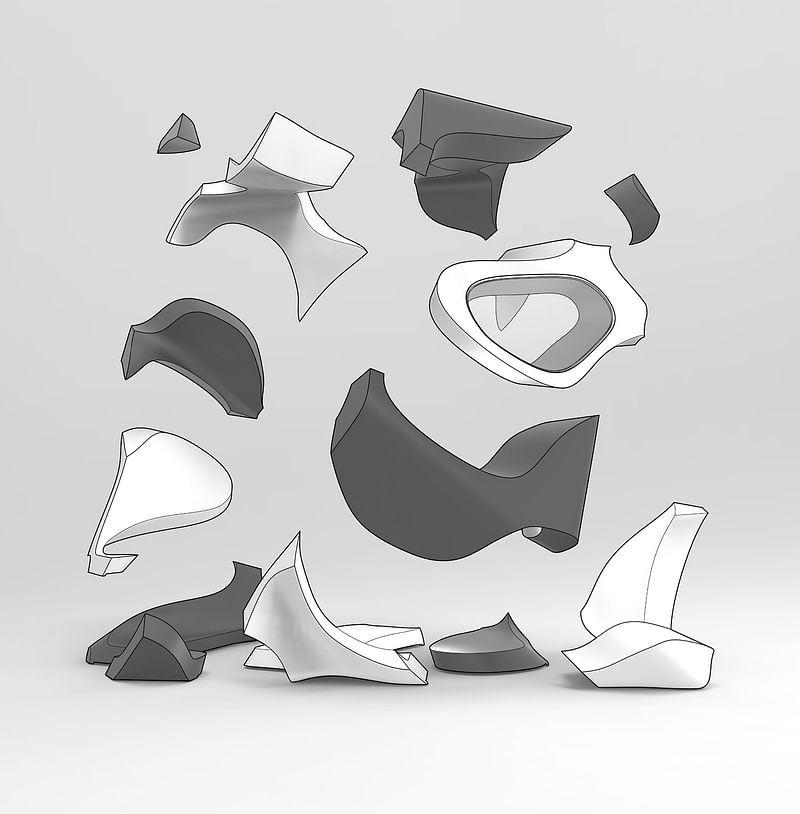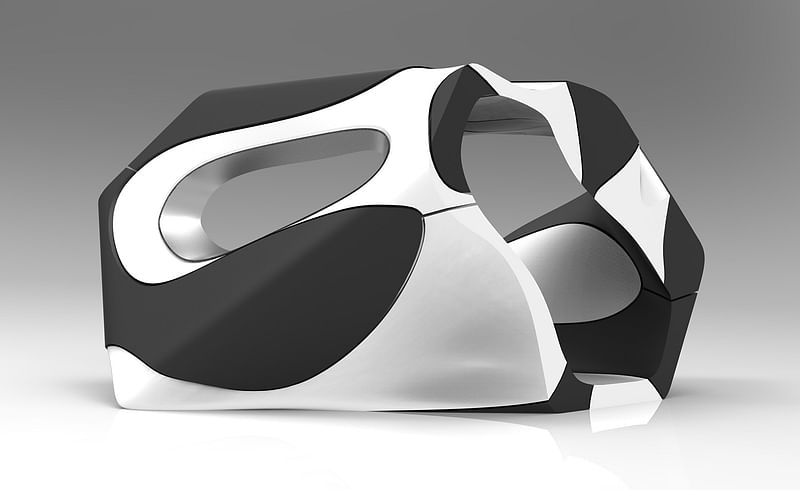TEX-FAB Plasticity winner "Plastic Stereotomy" now on exhibition at University of Houston
By Bustler Editors|
Tuesday, Apr 7, 2015

Related
"Plastic Stereotomy" made its official exhibition debut at the University of Houston's Hines College of Architecture in Texas. Designed by associate professor of architecture Justin Diles from Ohio State University and constructed by Kreysler & Associates, the kit-of-parts installation won TEX-FAB's latest Plasticity competition last fall out of four finalists and 70 entries total.
For the exhibition however, as time is not always very kind, Diles' original design -- shown in the renderings below -- had to be altered from 12 pieces down to seven. If you'll be at the University of Houston campus anytime soon, you can check out "Plastic Stereotomy" on display throughout April before it heads east to the 2015 AIA Expo in Atlanta.
Scroll down for more project details.
"The project features a self-supporting structural system formed from massive, stereotomic modules that stack precisely in a complex, nested arrangement. Diles was awarded the opportunity to build a full-scale version of his project with direct fabrication and material support from Kreysler & Associates. Consulting with the Kreysler team--led by Bill Kreysler and digital fabrication director Joshua Zabel--and TEX-FAB as commissioning agency, Diles developed the final design of the Plasticity Pavilion."

"Through several iterations, the form and assembly logics of the pavilion were optimized for fabrication using Kreysler's large-scale CNC and robotic cutting tools -- tools that are also currently being used for large-scale composite projects designed by Snøhetta, Diller Scofidio + Renfro and James Turrell. During the final week of the project, Diles and a team of students from Ohio State assisted in the construction effort at Kreysler’s facility in American Canyon, California, gaining a firsthand understanding of digital fabrication and composite material fabrication in a production environment."
Project description:

"The extension of previous research on complex geometric assemblies employing composites, the proposal specifically tests how plastic parts can be used to create a contemporary form of stereotomy. Historically this term refers to the techniques used to make close-fitting masonry constructions with very large (and extremely heavy) custom-cut stone elements. Here, the final design creates an open room using 12 big, self-supporting and interlocking plastic parts that are incredibly light for their size."

"The pavilion can be easily assembled by several people lifting and locking the pieces into place. The individual parts were shaped from 1.5lb expanded polystyrene foam blocks cut by a robot or a gantry-mounted 5-axis milling machine. The raw foam parts were protected with a resin-resistant primer and a layer of foil before being encased in a fiber-reinforced plastic (FRP) composite: three layers of chopped-strand E-grade fiberglass matt reinforce ment combined with a polyester-resin matrix."

"Like historic Cyclopean or Inca cut-stone masonry constructions, the Plasticity Pavilion is largely stereotomic: the parts meet and support one another along their hidden surfaces. To remain portable, however, the construction deviates from traditional stereotomy through the introduction of hinge-pin style connections that link the parts. Unlike vaulted masonry, which mostly works in compression, the pavilion experiences bending forces."
For this reason, the connection system remains a discreet but critical part of the design. The hinges are simply laminated into the FRP flanges, making for an efficient means of integrating connections between complexly curving surfaces. Seven parts of the final design proposal have been completed and are installed here at full-scale; the accompanying drawings and physical model show the design in its self-supporting entirety."

Construction of the full-scale elements was generously completed by Kreysler & Associates in American Canyon, California in March of 2015; the pavilion was first exhibited at the University of Houston’s Hines College of Architecture as part of Tex-Fab’s 2015 symposium Plasticity.



More construction photos in the thumbnails below.








Share
0 Comments
Comment as :